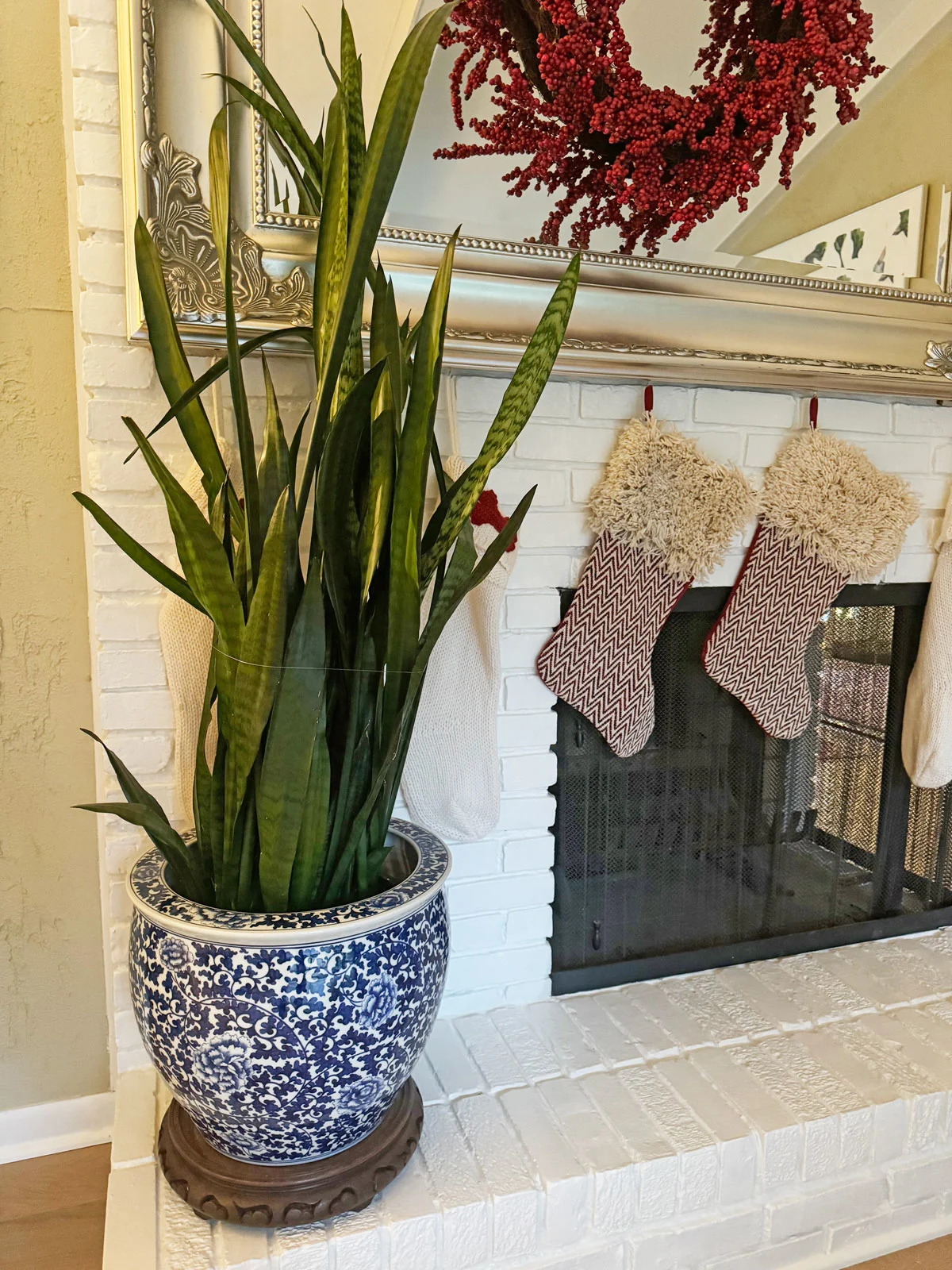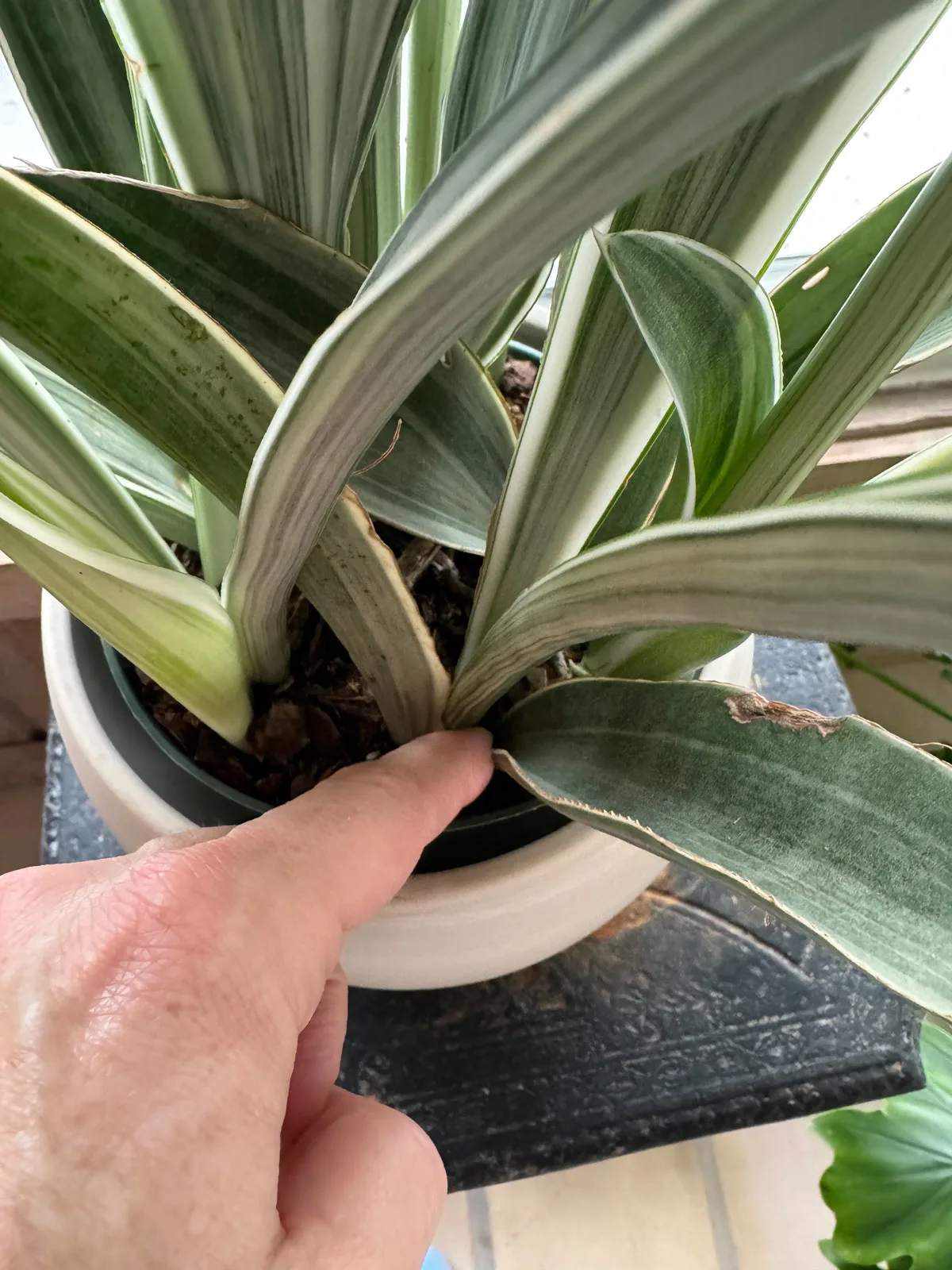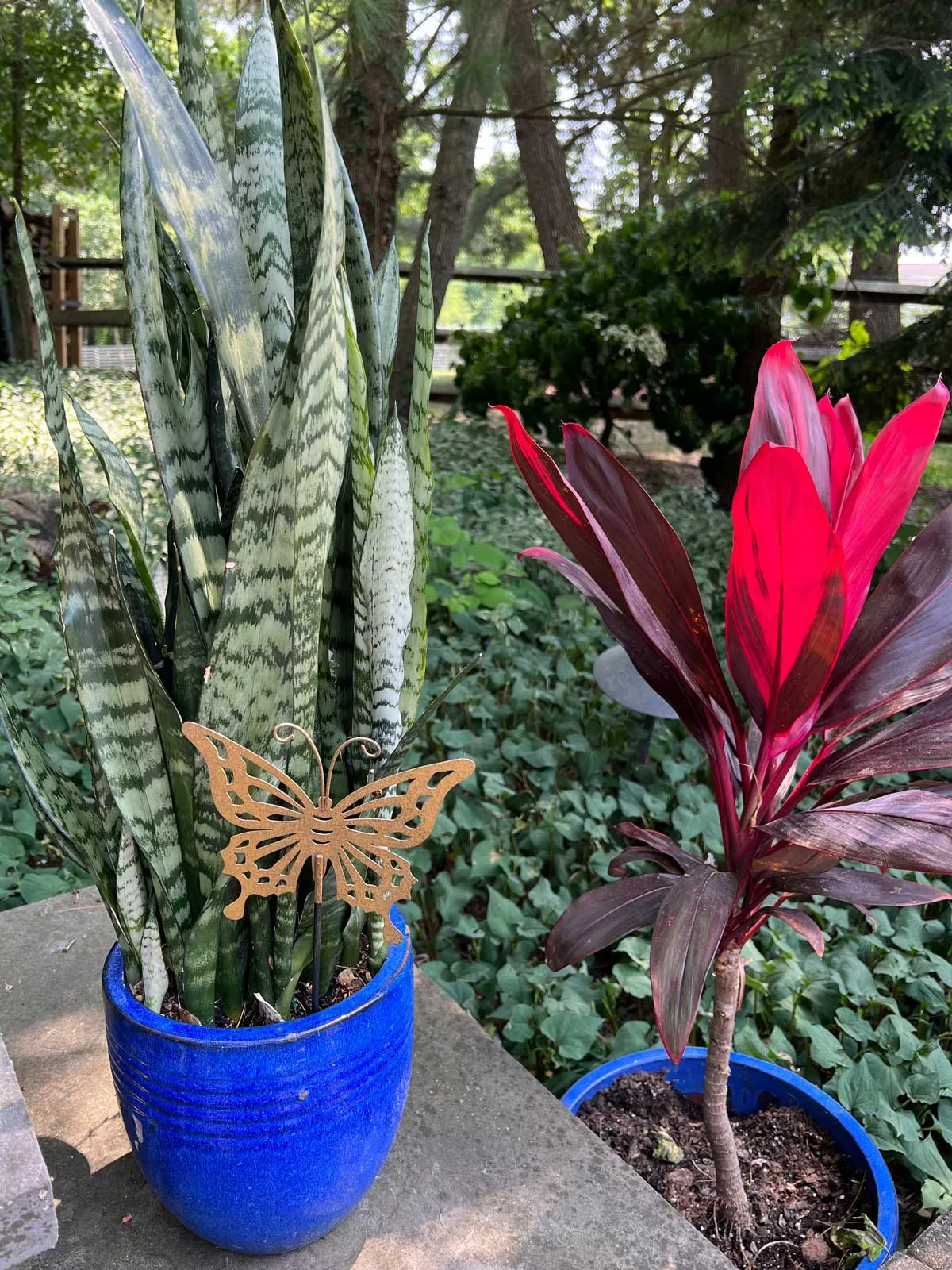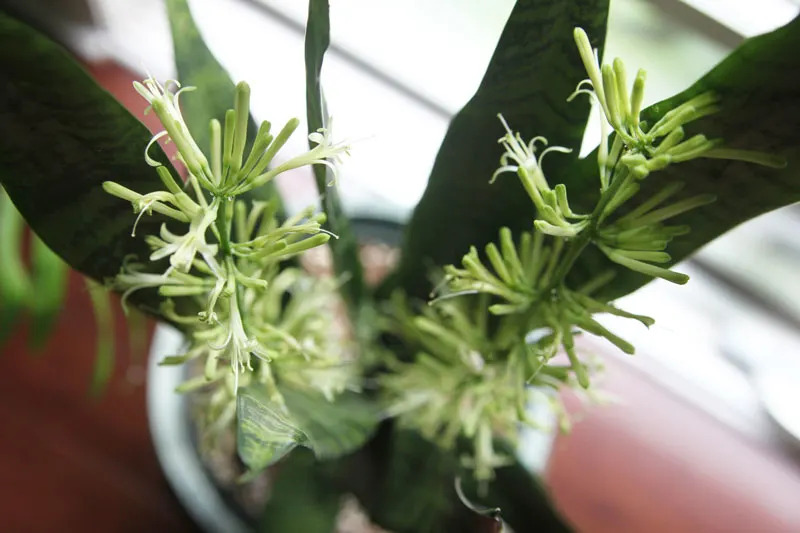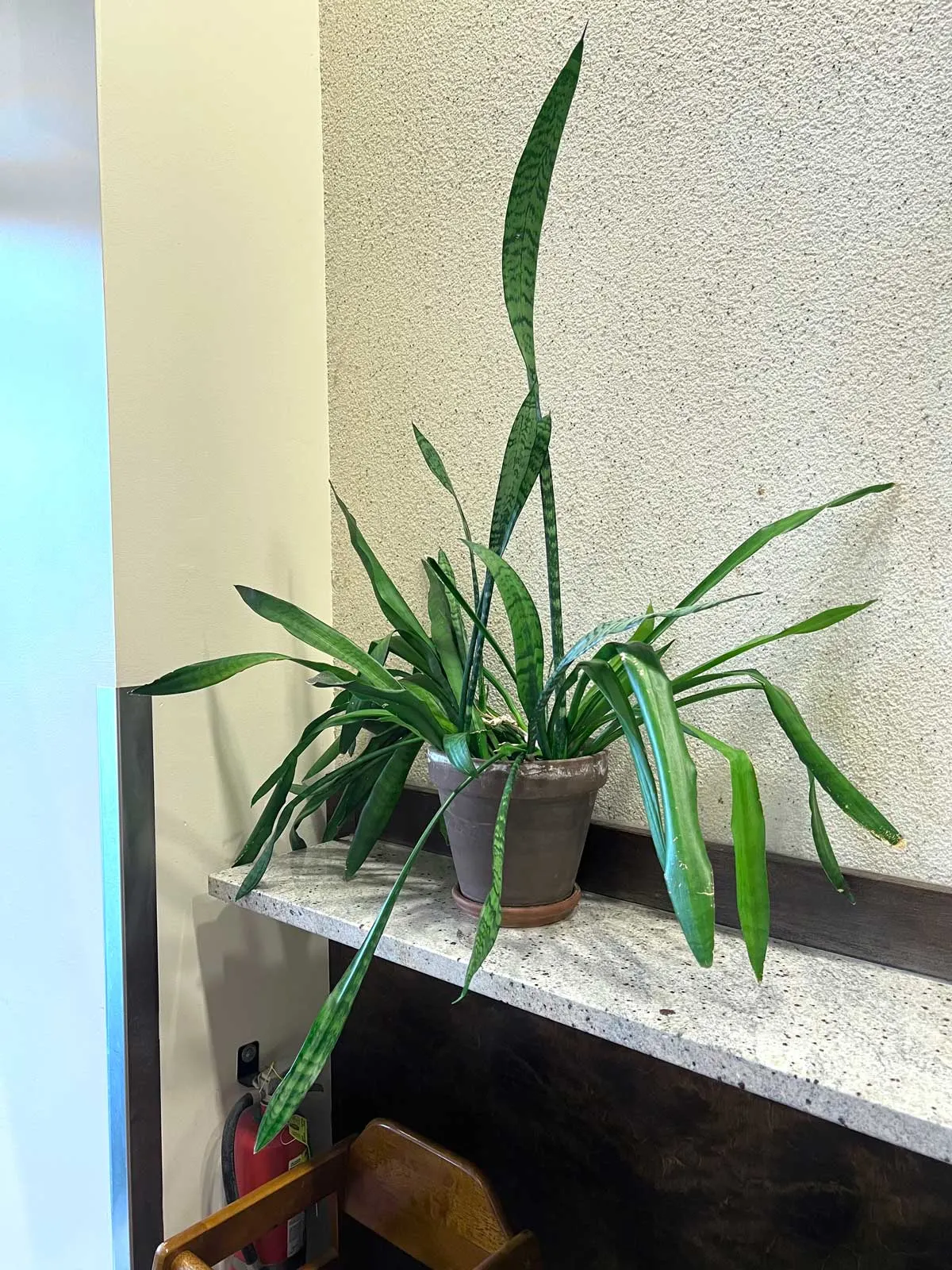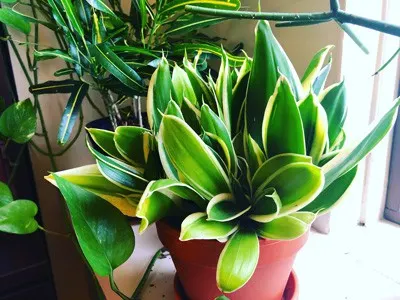Some of the links in this post may be affiliate links.
Are you wondering what the best soil for snake plants is? Look no further because in this post, I talk about 3 incredible mixes that you can use. You can purchase two of them and use them as-is, or make your own super simple DIY blend.
Keep reading to learn all about them so that you can choose the one that works best for you.
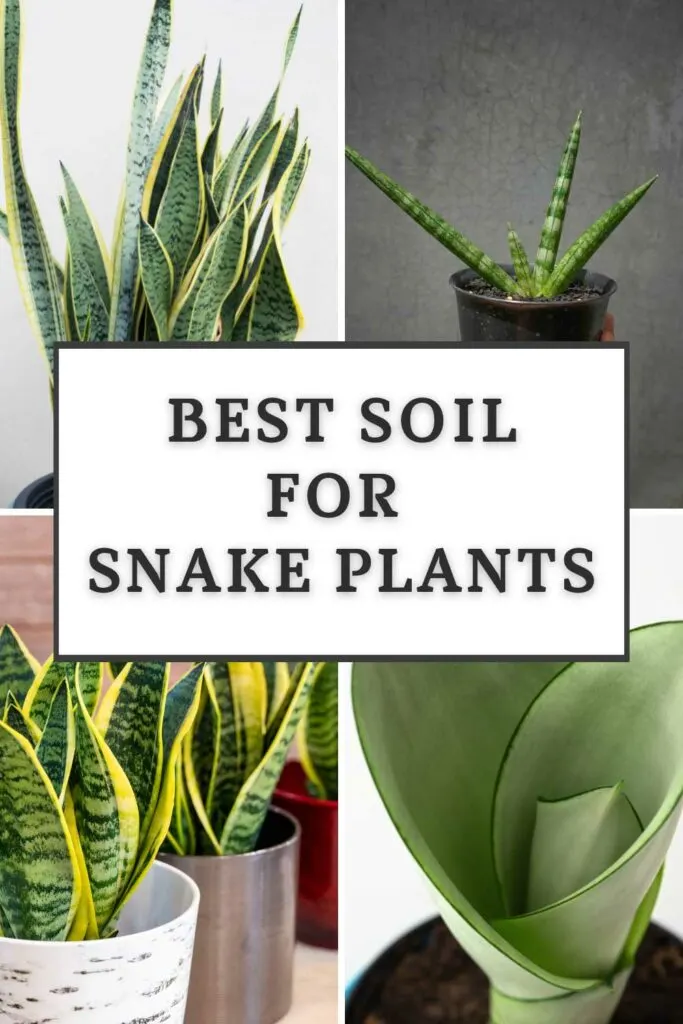
Snake plants, sometimes called mother-in-law’s tongue, belong to the Dracaena genus (formerly Sansevieria), and are among the best and easiest indoor plants to grow.
But in order to make sure you have healthy snake plants, choosing the best soil mix, along with providing enough light and having good watering practices, are very important.
Many of the snake plant varieties we grow in our homes are derived from Dracaena trifasciata (previously known as Sansevieria trifasciata) which is native to central Africa. They grow in a seasonally dry tropical biome, with wet and dry seasons.
Regardless what snake plant type you have, these soil recipes will work well for all of them.
Table of Contents
BEST SOIL FOR SNAKE PLANTS
Here are my recommended mixes that I will discuss in more detail.
- Tropical Succulent Soil Blend from Oh Happy Plants
- Desert Succulent Soil Blend from Oh Happy Plants
- DIY Mix with Pumice
Having the right soil mix that matches your growing conditions is very important. Depending on how much light you have your Sansevieria plants growing in also affects what type of soil mixture you use, and also how frequently you’ll need to water.
Most widely available potting mixes don’t provide adequate drainage for our indoor plants, even the so called “succulent soil mix” or “cactus mix” bags that you’ll find at hardware stores and garden centers!
And it’s not good enough to just have enough drainage holes. You must have a well-draining soil mix as well, and this is where most of the widely available bagged mixes fail.
There is one company though that makes superior mixes for your plants, and they are made by Oh Happy Plants.
1. TROPICAL SUCCULENT SOIL BLEND
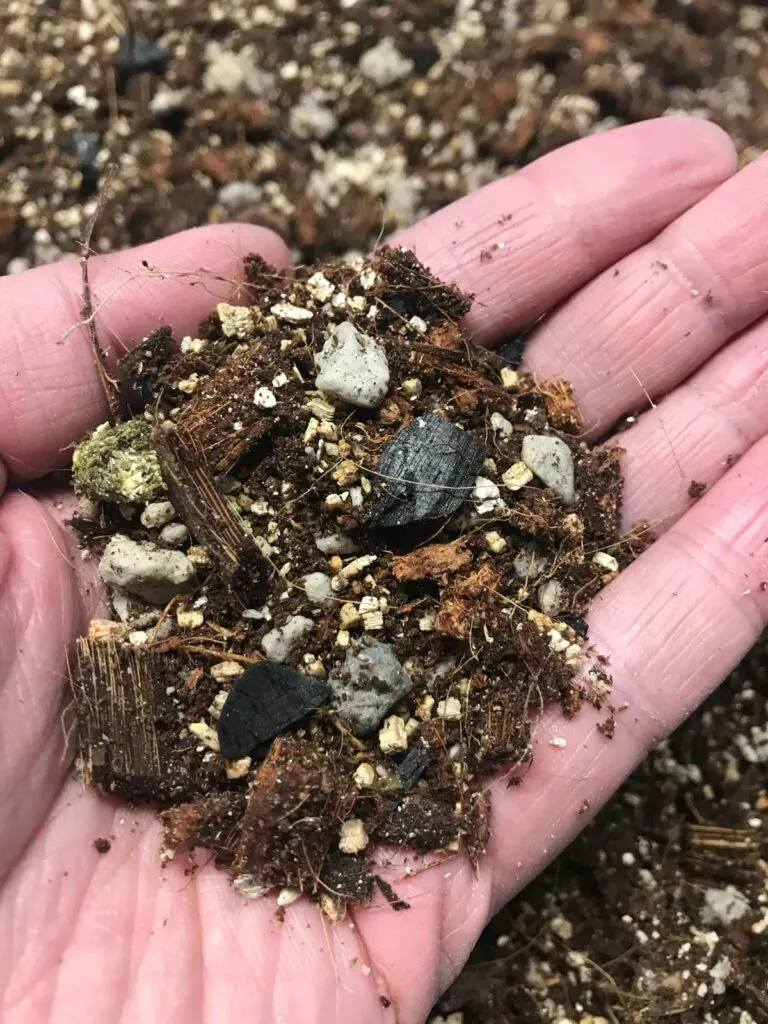
The Tropical Succulent Soil Blend from Oh Happy Plants is designed for tropical succulents when being grown in hot and sunny windows.
If you plan on growing your snake plant in low light, see the Desert Succulent Soil Blend in the next section. In that section, I also help to define what “low light” is.
You can use this mix straight out of the bag and is a wonderful mix due to the following reasons:
– There is no peat moss in this blend, so if you are environmentally conscious, this is ideal. Instead of peat moss, coco coir and coco chips are used.
– If you don’t like perlite, you’re in luck. Oh Happy Plants mixes use no perlite.
– Oh Happy Plants uses plenty of good organic matter like coco coir, as well as real ingredients like alfalfa meal, flax seed meal and rock dust to add essential nutrients for healthy growth.
– A mycorrhizal inoculant is used which improves plant health and vigor, and increases disease resistance naturally!
– Some charcoal is also included in the mix in order to encourage a healthy root system.
These are just some of the reasons, but I highly encourage you to check out the Tropical Succulent Soil Blend from Oh Happy Plants for your Sansevieria plants.
And browse their site since they have specific mixes for a variety of plants. I’ve used so many of them and they’re absolutely amazing. You will notice a big difference in the health and vigor of your plants!
For all the Oh Happy Plants links that I included in this post, it will automatically apply a 10% discount upon checkout for any products that are non-bulk.
If you buy in bulk, the discount will not apply, but you will still end up saving some money since there is a built-in price break.
2. DESERT SUCCULENT SOIL BLEND
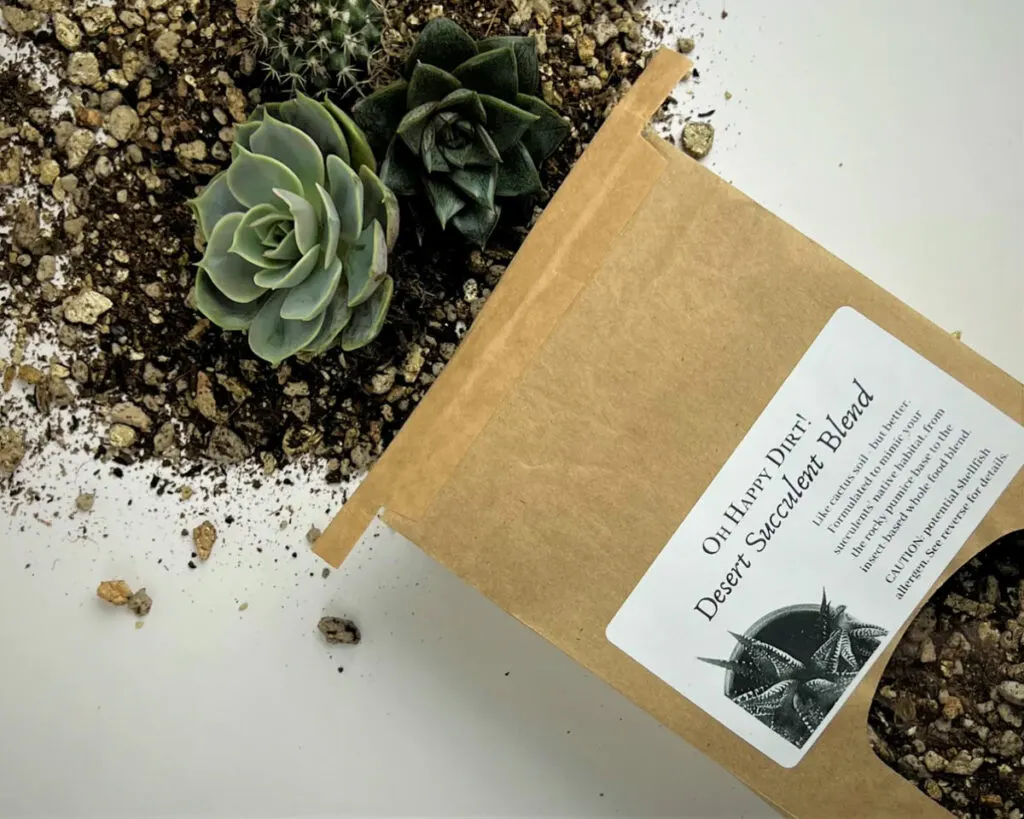
If you plan on growing your snake plant in lower light conditions, the Desert Succulent Soil Blend from Oh Happy Plants is great for this type of environment.
You can consider the following to be lower light:
– In front of any window that has zero direct sunlight and only indirect light.
– Any location far away from a window (even a few feet). Light intensity drops dramatically even a couple feet away from a window.
– If you want to use a light meter (link to Amazon), you can use this to roughly gauge “low light”. There are various definitions of low light, but any location around midday (where light intensity is highest) that has 100FC (foot candles) of light or less can be considered low light. Some sources indicate 250FC or less as low light).
What I love most about the Oh Happy Plants blends is that these mixes will greatly minimize any risk of root rot simply because the mixes allow for plenty of air to be available at the root ball, while still holding enough moisture for healthy roots.
The worst thing that you can do for your snake plants is grow them in low light and in soggy soil with poor drainage. This is detrimental to your snake plant’s roots and will encourage root rot.
The Oh Happy Plants mixes will help you avoid this issue since the drainage is amazing and there is plenty of air available to your plant’s roots.
3. DIY SNAKE PLANT SOIL MIX
If you want to make your own snake plant soil, this is an easy mix that you can make at home. Simply take your favorite potting mix and add some pumice to it.
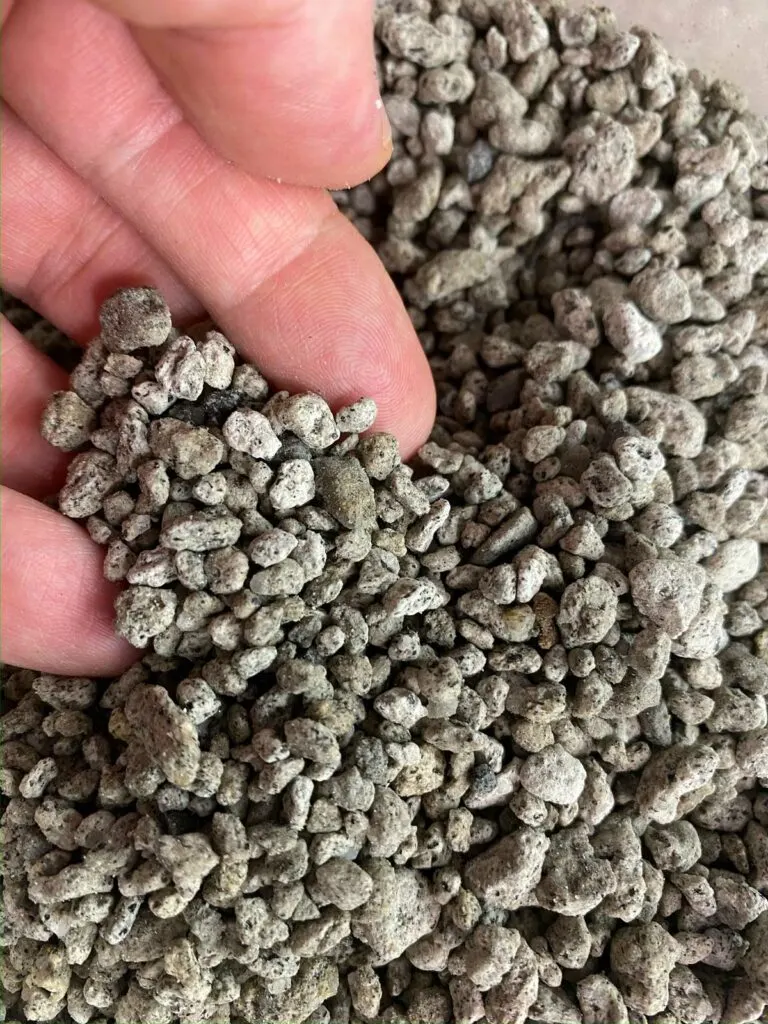
Pumice is a volcanic rock and does not float to the top of your soil like perlite does after watering your plants.
A good growing mix is to use 2 parts of either an all-purpose soil mix or even a cactus mix, and 1 part of pumice.
If you have your plant growing in a higher light situation, you can use the all-purpose mix. If you have your plant growing in a lower light situation, use the cactus soil mix.
My favorite pumice to use, and I buy plenty of it, is the 1/4 inch horticultural pumice (link to Amazon) from Bonsai Jack’s. It’s clean and consistent in size every time.
When it comes time to repot though, there are more considerations other than an ideal soil mix that are important, so check out my blog post on repotting snake plants.
The post goes over how you know when you should be repotting, as well as how to repot, and more.
Remember that houseplant care involves a lot of factors that work together, so it’s important to get the ideal type of soil mix, but also the correct light, the right pot size as well as pot type (plastic pot, terracotta pot, etc.), and proper watering practices.
I hope you’ve enjoyed this post on the best soil for snake plants. Have you used the Oh Happy Plants potting mixes? They’re truly wonderful, so comment below if you have. I’d love to hear!

